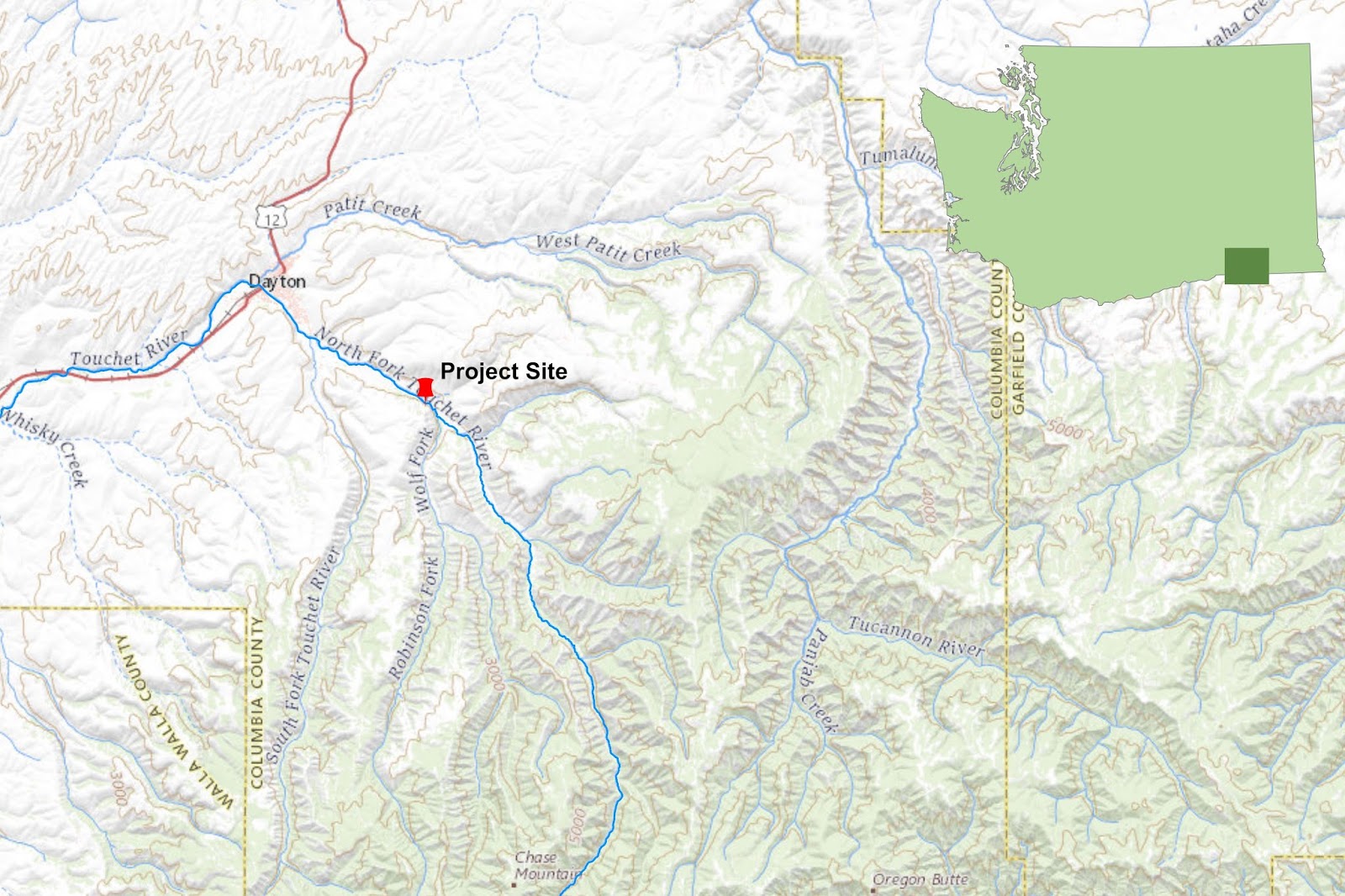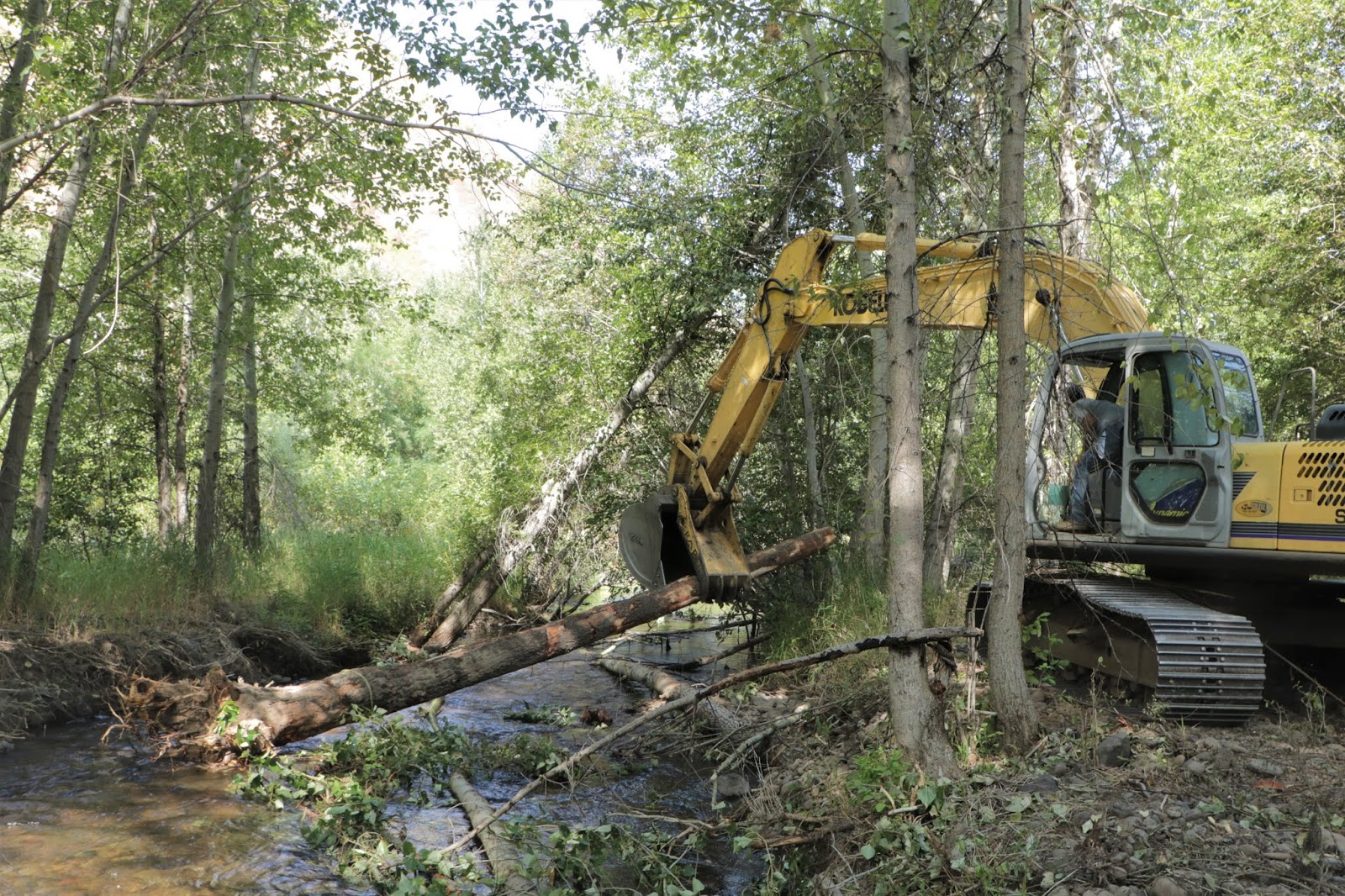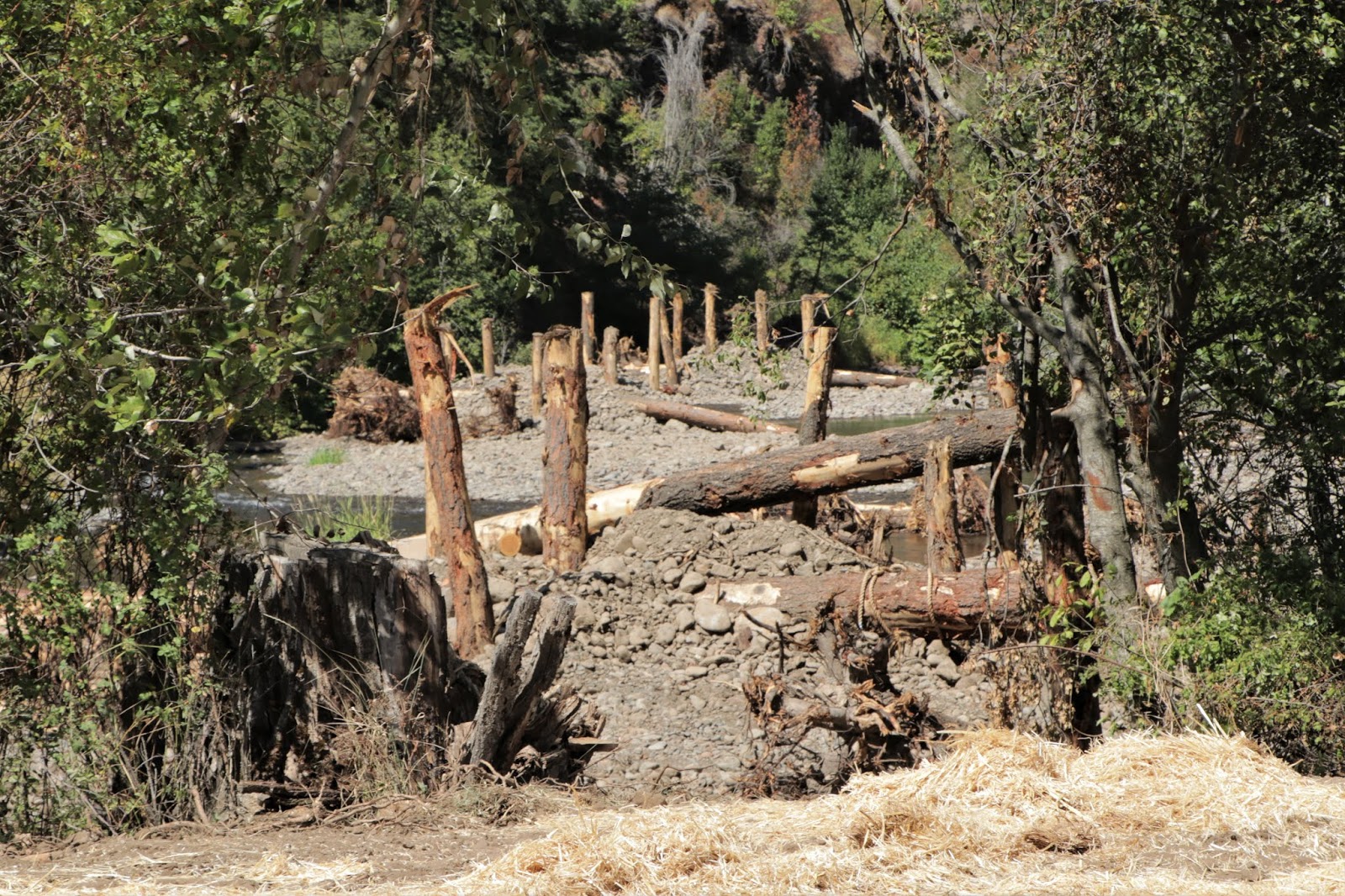Cobblestones crunch under a dusty yellow excavator dragging a 20-foot length of tree by its roots. The grappling arm weaves the log between two cottonwoods and into the river, where upset water raises its voice in response. Ecology's Floodplains by Design program is helping to fund restoration of a functional floodplain along a three mile stretch of the North Fork Touchet River in southeast Washington.
This deliberate logjam is one piece of a plan to restore a functional floodplain along a three mile stretch of the North Fork Touchet River in Southeast Washington. Boulders and woody debris will influence the river’s flow while creating deep pools for fish. Native trees and grasses planted along the banks will lower downstream flood risks and provide shade and cooler water. More than a mile of levee will be removed or set back to reconnect 50 acres of floodplain, slowing the springtime surge and storing water in underground aquifers for healthier late summer flows.
Construction will take about three years and $5 million to finish. The Salmon Recovery Funding Board, Confederated Tribes of the Umatilla Indian Reservation (CTUIR), and Bonneville Power Administration are contributing about $3 million to the project, while our Floodplains by Design (FbD) program is providing $2.1 million. Ecology co-manages FbD with The Nature Conservancy and Puget Sound Partnership, helping Washington communities reduce local flood hazards while restoring aquatic habitat, improving water quality, and enhancing outdoor recreation.
Restoring lost vitality
“Over the last decade or so we’ve realized that we’re losing the battle on protecting communities against flood risk,” said Scott McKinney, who leads the FbD grant program. “We’ve also realized that, much like wetlands, floodplains are vital ecosystems that provide a lot of services, and we’ve been losing those as well.”
Floodplains moderate the flow of water, deliver rich soil for farms, and offer important habitat for fish such as steelhead trout, which have been struggling for survival in the Touchet River watershed. Chinook salmon — a primary food source for Washington’s endangered Southern Resident Killer Whales — haven’t lived in the river for years. Improving habitat in the North Touchet will help the state Department of Fish and Wildlife and CTUIR in their efforts to reintroduce Chinook.
“We’re working under an umbrella philosophy that the tribes call ‘the River Vision,’ which is meant to not only restore habitat, but to improve the hydrology, geomorphic, and biological function of the river,” said CTUIR project leader Jerry Middel. “The North Touchet is a relatively small river when you look on the map, but it’s extremely important. What we’re doing here is going to directly benefit all our downstream neighbors.”
The city of Dayton, while not directly involved with the project, is among the downstream beneficiaries. Adding logjams and other material to the system will prevent sediment from rushing into town to undermine levies and increase flood risk when river flows are high.
“The reason why this project is important is, it shows collaboration between tribal agencies, government agencies, and private landowners, and that’s not an easy nexus to form,” Middel said. “By us being out here, we can find common ground and get these projects on the ground.”
Snake River Salmon Recovery Board executive director John Foltz is primarily focused on salmon recovery, but he agrees a return to natural conditions will be better for everyone.
“If we can give the river a little more space, there’s so many multiple benefits to that — for the ag community, for flooding, for citizens downstream, and for the environmental condition of the ecosystem,” he said. “Sometimes we don’t have that luxury because of what’s occurring in the watershed, but in places where we do have that option and we have willing landowners, we feel like we can really have a win-win situation.”
Providing space to move
One landowner involved in the project is Bill Warren, whose family has farmed here since his grandparents arrived in the early 1900s. A section of his land will be given over to floodplain through a conservation easement. An excavator lifts a log into the North Touchet River.
Past attitudes about flooding in the North Touchet and other watersheds have focused on control. Landowners attempted to tame rivers with levees and dikes, while property development annexed natural floodplains. Restricted rivers pushed their energy downstream, decimating salmon runs and leaving more towns and farmland in the path of dangerous floods.
Warren has learned the value of letting the river flex, a belief he’s sharing with his neighbors.
“My neighbors are curious about what I’m doing...They know I ask a lot of questions and they know I’m satisfied, so they could probably be satisfied as well,” he said. “With this project, when you’re working with hydraulic engineers, you’re working with geologic engineers, you can do modeling to see how the river’s performing at 20, 30, 50 year floods. When we worked on the rivers in the past we didn’t have those tools.”
“We do a lot of planning, a lot of assessment work, and that effort doesn’t always lead to something on the ground,” Foltz said. “As we’ve built working relationships and been on the same page and been advocates for each other, that’s led to successfully getting funding that we can actually get on the ground to make improvements."
Funding is available
Boulders and woody debris influence river flow and create pools for fish.
Ecology administers these funds through a competitive grant program, collaborating with the Nature Conservancy and Puget Sound Partnership to score applications and issue awards to eligible entities. Together, we make sure state money is invested well and restoration milestones are reached.
Have a project in mind? We're accepting pre-applications for new Floodplains by Design grants through Jan. 31, 2020. Ecology uses pre-applications to screen projects and help determine their suitability for the program. Grants will be awarded for the 2021-23 biennial state budget period, which starts July 1, 2021.
Learn more at our Floodplains by Design page.




